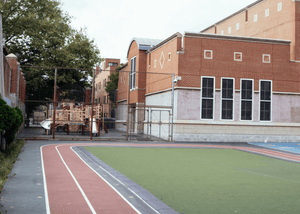Water Quality InformationWritten By Actual Experts
RSSStagnant Water and Lead in School Pipes Are a Health Risk To Children
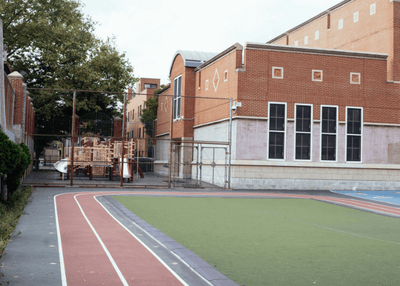
New York Passes Bill To Reduce Lead In School Drinking Water

Christina Liu | Hydroviv Science Team
The New York State Legislature recently passed a bill to help make drinking water in schools safer. National Resources Defense Council (NRDC) reported that this bill lowers the Action Level of lead detected at school drinking water taps from the current EPA Action Level of 15 parts per billion (ppb) down to 5 ppb, which is the bottled water lead concentration limit set by the Food and Drug Administration (FDA). The EPA, CDC and the American Academy of Pediatrics (AAP) all recognize that there is no safe level of lead for children. However, the 5 ppb Action Level is much closer to the recommended lead level recommended by the AAP of 1 ppb, so it is a major step forward in helping New York school children access safer drinking water in schools.
Is Your City In NRDC's Latest Lead Contamination Report?
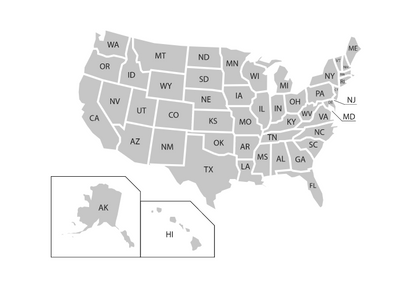
Christina Liu | Scientific Contributor
The Natural Resources Defense Council (NRDC) released a recent analysis of EPA lead data. NRDC found that 186 million people across the United States were exposed to elevated lead levels through their drinking water systems.The EPA, CDC and the American Academy of Pediatrics all recognize that there is no safe level of lead for children. This article breaks down important findings from this study and what they mean for your drinking water.
1. Lead in Drinking Water Is a Significant Issue in Many Parts of the Country
- 186 million people in the United States between January 1, 2018 and December 31, 2020 drank water that exceeded the pediatrician recommended maximum lead level of 1 part per billion (ppb).
- 28 million people were served by drinking water systems that totaled 12,892 lead violations.
- Seven million people drank water that exceeded EPA’s Lead Action Level of 15 ppb.
- The CDC and the American Academy of Pediatrics have stated that there is no safe level of lead for young children. The EPA has also set the maximum contaminant level goal (MCLG) for lead in drinking water at 0 parts per billion because lead can be harmful to human health even at low exposure levels.
2. Do Federal Laws Protect You From Lead Exposure in Drinking Water?
Unfortunately, no. The Lead and Copper Rule (LCR) was first enacted in 1991 and has seen minimal changes since then. It is the only major regulation aimed at protecting the public from lead exposure in drinking water. It does however contain loopholes, exemptions, and regulatory flaws which demonstrate that the LCR does not necessarily prioritize human health. The most obvious and deceptive flaw is the 90th percentile rule, which states that only 90% of samples must meet EPA’s 15 part per billion “Action Level (AL)” threshold. This means that 10% of samples can exceed the AL threshold and still be in compliance with the law.
3. My Water Source is Completely Clean. Do I Still Have To Worry About Lead?
Lead contaminates tap water differently than most pollutants, because lead comes from plumbing - not the water supply. Water leaving the treatment plant can be entirely lead-free but becomes contaminated once it hits older infrastructure. For example, some buildings in older neighborhoods have lead-containing service pipes that connect water mains to the residential plumbing, and plumbing installed before 1986 often used lead-containing solder to join copper pipes. If corrosion control measures fail (what happened in Flint, MI), lead can leach from the pipes into the tap water. This problem is exacerbated when water sits stagnant for several hours before use (e.g. overnight or while resident is at work), because lead concentrations rise as corrosive water sits in the pipes.
Case Study: New York City
New York City provides municipal tap water for more than half the population of New York, through an impressive network of 19 reservoirs and 3 lakes. New York City’s tap water is widely recognized in the water industry as the “Gold Standard” for urban water providers (it’s truly an engineering feat on an unimaginable scale). However, even if the water leaves the reservoirs and water plants lead-free, lead contamination occurs when the water encounters aging pipes and connections that contain lead. In the table below you’ll notice several samples are well over the federal Action Level - some are over 300 times higher than the 15 part per billion threshold.
Table 1. New York City lead levels from 2007 - 2022
4. Does The American Jobs Infrastructure Plan Go Far Enough To Reduce Lead Exposure?
The American Jobs Plan includes $111 billion in funding for water infrastructure. $45 billion of this is being allocated to eliminate ALL lead pipes and service lines. That is a significant promise, but not a lot of money with which to accomplish this. An estimated 6-10 million homes in the U.S. still receive their drinking water from a lead pipe or lead service line. In addition, the process of replacing city-wide distribution lines will be invasive and time-consuming. It involves digging up streets, section by section, across an entire city. Individual homeowners also need to hire a specialist to replace their lead service lines to avoid potential exposure to this known neurotoxin. Also, lead levels increase for the first few months after a service line is replaced. We have an article that goes in depth as to why this is, which you can find here. Unfortunately, if you currently have lead service lines that bring water to your home, while you may experience relief (new pipes) in the future, this won’t be an immediate fix.
What can I do?
-
Get informed. Look up the water quality report in your area. See if your water supplier is one of the ones mentioned in the NRDC study. Information on lead in drinking water, testing methods, and steps you can take to minimize exposure is available from the Safe Drinking Water Hotline or on the EPA’s page: Basic Information about Lead in Drinking Water.
-
Get your water tested for lead. Many cities have free lead testing kits or lead testing services. Check your city’s website or water quality report for information. Please take advantage of these resources if they are available to you.
-
Flush your tap before using water for consumption. If your water has been sitting for over six hours, minimize the potential for lead exposure by flushing your tap for a minimum of 5 minutes before using water for drinking or cooking.
-
Use cold water. Use only cold water for drinking, cooking and making baby formula. Hot tap water is known to cause lead to leach from your home's pipes.
-
Check your Filters. If you are using a filter for your drinking water, please verify that it is certified for lead removal.
How Can Hydroviv Help Me?
Hydroviv is a water filtration company that uses water quality data to optimize water filters for each customer's water. In addition to lead, we use the water quality data for each location to determine what we consider to be major “points of emphasis” that we use to build water filters that are built specifically for municipal water in your area as well as for private wells.
If you’re interested in learning more about water filters that have been optimized for your municipal tap water or private well, or just have questions about water quality in general, feel free to visit www.hydroviv.com, reach out by email (hello@hydroviv.com) or through our live chat. We post water-related news on Twitter, Instagram, and Facebook.
Hydroviv's drinking water filters carry NSF certifications to Standard 42 (aesthetic effects--Chlorine Removal) and Standard 53 (health effects--Lead, VOCs, and PFOA/PFOS removal), and are independently tested to remove hundreds of contaminants.
Other Articles We Think You Might Enjoy:
PFAS and The Safe Drinking Water Act
Disinfection Byproducts in Drinking Water: Toxicity, History, and Policy
Does Boiling My Water Purify It?
Chicago's Problematic Lead Service Line Replacement Program
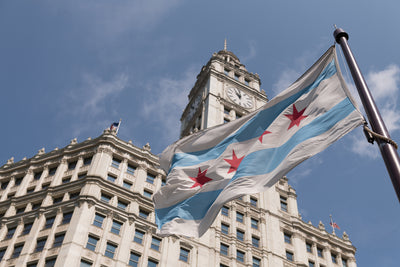
Analies Dyjak, M.A. | Head of Policy
Over 6.1 million homes in the United States still use a Lead Service Line (LSL) to deliver drinking water into their homes. The City of Chicago has more lead pipes and Lead Service Lines than anywhere else in the country, according to Chicago Mayor Lori Lightfoot. The city recently announced that it would prioritize replacing Lead Service Lines beginning in 2021. Unfortunately, the program isn’t as all-encompassing as would be expected by a city the size of Chicago. This article will break down Chicago’s lead line replacement program, and discuss other cities in the U.S. with similar issues.
Details of Chicago's Lead Service Line Replacement Program:
Lead-Safe Chicago was initiated in 2020 to bring further attention to Chicago’s unresolved lead crisis. The city will assist low-income residents by providing a free lead line replacements to households with a combined income of below $67,300. Households who make more than $67,300 and do not qualify, are encouraged to participate in the “homeowner-initiated program” - which means that homeowners must identify their Lead Service Line, pay for it to be replaced, and pay for bottled water/filtration while the line is being replaced. The projected average cost to a homeowner in Chicago will be $6,000. The city has offered to waive all permitting fees, which they claim to be as high as $3,000. The homeowner-initiated program is entirely voluntary, and not mandated by the city of Chicago. It's important to mention that because Chicago has an estimated 400,000 Lead Service Lines, this program will take years to complete.
Lead Levels Often Increase for Months After Replacing a Lead Service Line
It may seem counter-intuitive, but lead levels often increase for at least a few months, if not over a year, after a lead service line is replaced. This is because the protective coating inside the pipe (created by years of corrosion control) gets disrupted, and the debris/freshly uncovered pipes surface can contaminate water with lead. One of our scientists wrote an article that goes into further detail about this. You can check it out here.
If You Rent in Chicago, You're on Your Own
There are over 1 million renters in the City of Chicago. This initiative does not require homeowners or landlords to take any sort of action, or replace an existing lead service lines. If you rent or lease in Chicago, you’re entirely on your own for ensuring your tap water is free of lead.
Chicago Water is 9 Times Above The Public Health Goal for Lead
Despite having the most lead pipes in the country, Mayor Lightfoot continues to claim that Chicago water “meets all safety standards.” It’s important to note that there is no such thing as a “safety standard.” Federal regulatory standards, also referred to as “Maximum Contaminant Levels” (or “Action Level” for lead), are the enforceable standards used by EPA. These federal regulatory standards are not entirely based on health outcomes, and must weigh the cost of removing a contaminant with the benefits to public health. Health organizations like the Centers for Disease Control and American Academy of Pediatrics have created public health standards, which on the contrary, are actually based on health impacts. According to both of these agencies, there's is no "safe" level of lead for children. The Environmental Protection Agency has even created a Maximum Contaminant Level Goal of 0 parts per billion for lead. Lead levels in Chicago are currently 9 times higher than this public health goal.
Chicago is Not Alone:
This ongoing and unresolved lead crisis in not unique to Chicago. New York City, Pittsburgh, Newark, Denver, Portland, Oregon and so many more all have underreported issues with lead in drinking water. Municipalities are not always forthcoming about the safety of the water flowing through their taps. In June of 2018, the mayor of Newark, New Jersey claimed that Newark’s drinking water was safe for consumption and that residents could continue drinking Newark tap water. Unfortunately, Newark was actually in exceedance of the federal Lead Action Level of 15 parts per billion. If you have any questions about your city's water quality report, one of our Water Nerds would be happy to help! You can send us an email at hello@hydroviv.com or send us a chat on our homepage: hydroviv.com.
Other Articles We Think You Might Enjoy:Things To Know Before Replacing Your Home's Lead Service Line
TDS Meters Do Not Tell Us Meaningful Information About Water Quality
Does Boiling or Freezing My Water Remove Lead?
Michigan to Pay Over $600 Million to Families in Flint
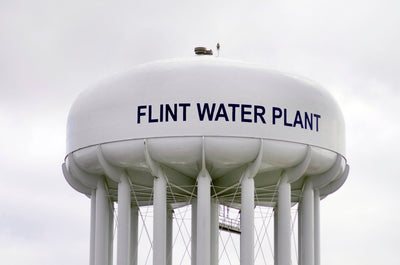
Updated November 17, 2021 to include recent news
Analies Dyjak, M.A. | Policy Nerd
A judge has approved a $626 million settlement for damages from the 2014 Flint Water Crisis. The State of Michigan is required to appropriate $600 million dollars of the total into a qualified settlement fund, which will be made available to children, residents, property owners, and businesses that were impacted by water distributed by the city. Almost 80% of the $600 million is being awarded to those who were children during the time of exposure.
Background Flint Water Crisis:
On April 25, 2014, the city of Flint switched its water supply from the Detroit Water and Sewerage Department (sourced from the Detroit River and Lake Huron), to the Flint River. Officials initially switched the water supply in an effort to cut costs. Flint city officials failed to add a proper corrosion control inhibitor to the new water source during treatment. This caused lead to leach from distribution pipes, and enter the municipal system at extremely elevated levels. According to the Centers for Disease Control, 99,000 people in Flint, Michigan were exposed to elevated levels of lead. Lead is a neurotoxin, and according to the American Academy of Pediatrics, there is NO safe level for children. Despite the current 15 part per billion Federal Action Level for lead, our team at Hydroviv follows the logic that children should not ingest any level of lead.
Financial Breakdown of $600 Million Flint Settlement:
-
79.5% - Minor Children Settlements Categories: 64.5% for ages 6, 10% for ages 7-11, and 5% for ages 12-17
-
18% - Adults and Property Damage Settlement Categories: 15% for adults and 3% for property damage
-
0.5% - Business Economic Loss Settlement Category
-
2% - Programmatic Relief Settlement Category
Important Details:
If the State fails to meet these conditions within 60 days, the Plaintiff’s are able to completely rescind the entire settlement. Also, in accordance with the settlement, individuals who were minors at the time of exposure are not required to show proof of injury in order to be eligible for compensation. This should help the State of Michigan get funds out to impacted parties in a timely manner. Additionally, individuals that were minors at the time of exposure may be eligible for larger amounts of compensation if they are able to show elevated blood lead levels. A similar eligibility requirement is true for those who were adults at the time of exposure.
A Few Red Flags:
The amount of compensation made available to each individual Flint resident is entirely dependent on how many people file claims. Therefore, there’s no way to estimate the amount of money each Flint resident will receive, or if it will be sufficient enough to address all expected damages. The settlement also claims that funding will be made available to provide special education services to children exposed to high lead levels Flint. No further details were provided about these special education services or how much funding will be allocated. It's unclear if portions, or all, of the individual financial compensation funds are expected to be used for at-home special education services.>
Our Take:
The recent settlement leaves us with more questions than answers regarding the tragic Flint Water Crisis. What happened between April 24, 2014 and December 31, 2016 demonstrates what can happen to under-served and underrepresented communities in the United States. In short, it shows the worst kind of government failure. We may never truly understand the full extent of these damages, and $600 Million dollars does not even begin to address the trauma and anxiety that Flint residents face every single day. We're proud to still be working with Little Miss Flint and the Little Miss Flint Clean Water Fund to continue our charitable efforts across the entire country.
Other Articles We Think You Might Enjoy:How Does Lead Enter Drinking Water?
What You Need to Know About Disinfection Byproducts in Tap Water
How Did Hydroviv Perform in a Duke University PFAS Removal Study?
